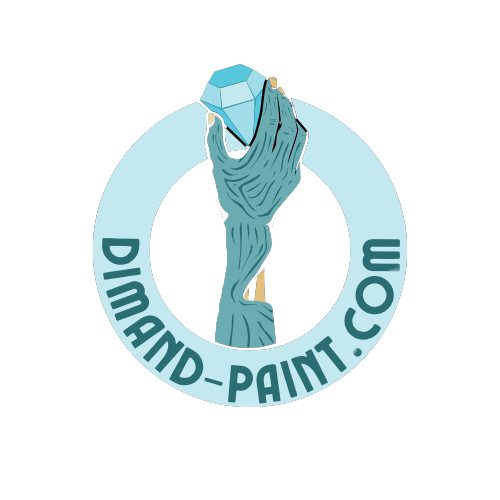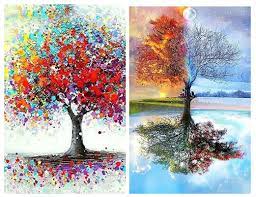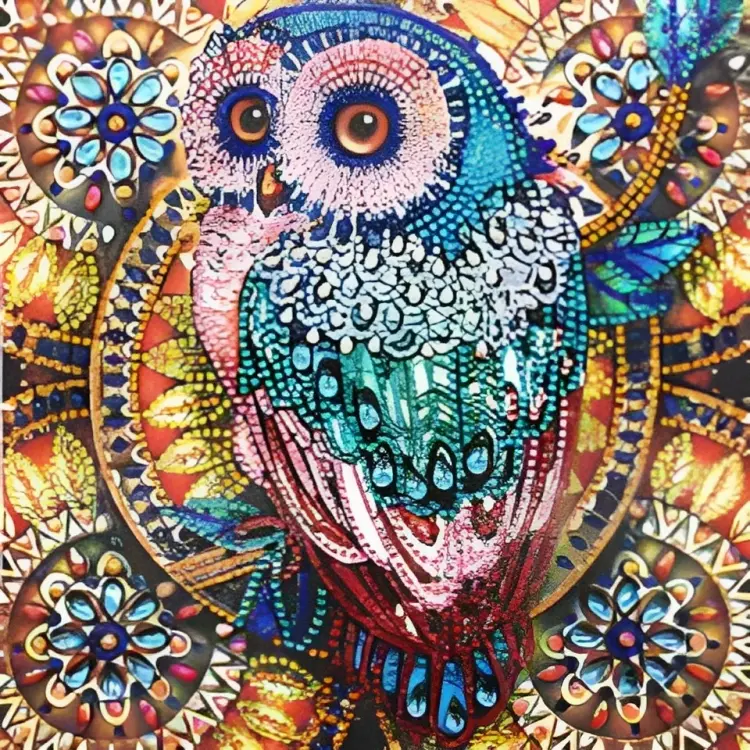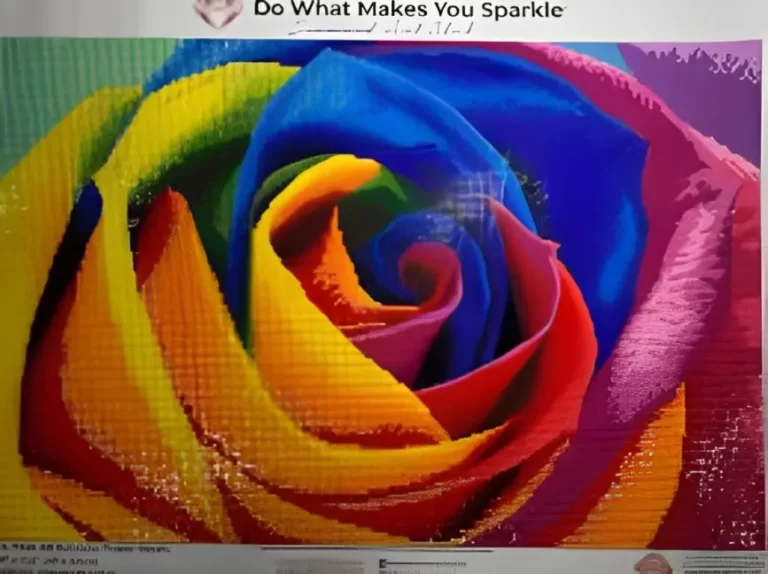What is Diamond Painting Needlework Cross Stitch?
Diamond painting needlework cross stitch is a popular crafting technique that combines elements of diamond painting and traditional cross stitch. It involves using small, colorful diamond stones to create intricate designs on a canvas, similar to the process of cross stitching.
This unique combination has captured the interest of craft enthusiasts around the world, offering a creative and relaxing activity with dazzling results.
Understanding Diamond Painting
Diamond painting is a technique that utilizes synthetic diamond stones made from resin. These stones, often referred to as drills, are flat on the bottom and have a multi-faceted, glittering top side.
The stones are adhered to a pre-printed canvas that is coded by color and symbol, allowing crafters to create a mosaic-like artwork with sparkling detail. Compared to traditional cross stitch, diamond painting offers a different approach to achieving a similar end result.
The Process of Diamond Painting Needlework Cross Stitch
To begin a diamond painting needlework cross stitch project, one needs a canvas, diamond drills, a diamond applicator tool or tweezers, and wax. The canvas is pre-printed with a design, and each symbol on the canvas corresponds to a specific color and shape of the diamond drill.
The process involves placing the diamond drills onto the canvas, one by one, following the coded system.
To affix the diamond drills, the crafters use the diamond applicator tool or tweezers, which are dipped into wax to help pick up the drills. The drills are then pressed onto the canvas, aligning them with the corresponding symbols.
This process is repeated until the entire canvas is covered with the diamond drills, creating a dazzling and vibrant artwork.
Benefits and Advantages of Diamond Painting Needlework Cross Stitch
Diamond painting needlework cross stitch offers various benefits and advantages for crafters. Firstly, it provides a therapeutic and relaxing activity, allowing individuals to focus their attention and immerse themselves in the creative process.
The repetitive nature of placing the diamond drills can be meditative and soothing.
Additionally, diamond painting offers opportunities for creativity and customization. There is a wide range of patterns available, from landscapes and animals to abstract designs and portraits.
Crafters can also create their own diamond painting patterns based on personal preferences or favorite images, adding a personal touch to their artwork.
The finished results of diamond painting needlework cross stitch are truly stunning. The combination of sparkling diamond drills and carefully crafted designs creates artworks that catch the eye and bring a vibrant ambiance to any space.
The shimmering effect of the diamond drills adds a touch of luxury and elegance to the finished piece.
Furthermore, diamond painting helps in developing fine motor skills, as it requires precision and dexterity in handling the small diamond drills.
Crafters can improve their hand-eye coordination and finger flexibility through the process of picking up and placing the diamond drills on the canvas.
The social aspect of diamond painting is another advantage. Many online communities and social media groups are dedicated to diamond painting, where enthusiasts can share their works, exchange tips and techniques, and connect with like-minded individuals.
It provides an opportunity to engage with a community of fellow crafters and foster a sense of belonging.
Tips and Techniques for Diamond Painting Needlework Cross Stitch
To achieve the best results in diamond painting needlework cross stitch, it is essential to follow some tips and techniques. Firstly, maintaining proper tension and spacing is crucial.
The diamond drills should be placed close together, with minimal gaps between them, to create a smooth and cohesive look.
Managing the diamond drills is also important to avoid loss or mix-up. Crafters can use organizers or trays to separate and keep track of the different colors and shapes of the drills.
This helps prevent confusion and ensures an organized working process.
Choosing the right canvas and diamond size is another consideration. Canvases come in various sizes, and selecting the appropriate one for the desired level of detail is important.
Similarly, the size of the diamond drills can impact the overall appearance of the artwork. Larger drills may result in a bolder and more visible design, while smaller drills allow for intricate and detailed work.
Different types of diamond drills, such as round or square drills, offer unique effects. Exploring these options and experimenting with various styles can add variety and interest to diamond painting projects.
Common Challenges and Solutions in Diamond Painting Needlework Cross Stitch
Like any craft, diamond painting needlework cross stitch may present challenges along the way. One common issue is adhesive problems, such as the canvas not adhering properly or losing its stickiness over time.
To overcome this, crafters can use extra adhesive or apply a thin layer of clear glue to ensure the diamonds stay in place.
Correcting mistakes and adjusting diamond placement is another challenge that may arise during the process. If a diamond is placed incorrectly, it can be carefully removed using tweezers or the edge of the diamond applicator tool.
The diamond can then be repositioned in the correct spot.
Color matching and design accuracy can also be challenging, especially with intricate patterns.
Paying close attention to the coded system and double-checking color placements can help ensure a precise and accurate representation of the intended design.
Finishing and Displaying Diamond Painting Needlework Cross Stitch
Once a diamond painting needlework cross stitch project is completed, crafters have various options for finishing and displaying their artwork.
Framing is a popular choice, allowing the artwork to be showcased as a wall hanging or decorative piece. There are ready-made frames available, or crafters can opt for custom frames to perfectly complement their artwork.
Diamond paintings can also be displayed in smaller frames, used as covers for jewelry boxes or decorative containers, or even transformed into unique pieces of home decor.
The versatility of diamond paintings offers countless possibilities for incorporating them into interior design.
Preserving and protecting diamond paintings is important to maintain their longevity and vibrancy. It is advisable to keep the artwork away from direct sunlight, excessive heat, or moisture.
Cleaning can be done gently with a soft cloth or a brush specifically designed for diamond painting.
Conclusion
Diamond painting needlework cross stitch combines the creativity of diamond painting with the familiarity of cross stitch, offering a unique and enjoyable crafting experience. It allows crafters to create dazzling and vibrant artworks while providing relaxation, creativity, and opportunities for social engagement.
With proper techniques and a touch of creativity, diamond painting needlework cross stitch opens a world of possibilities for both experienced and novice craft enthusiasts.








One Comment